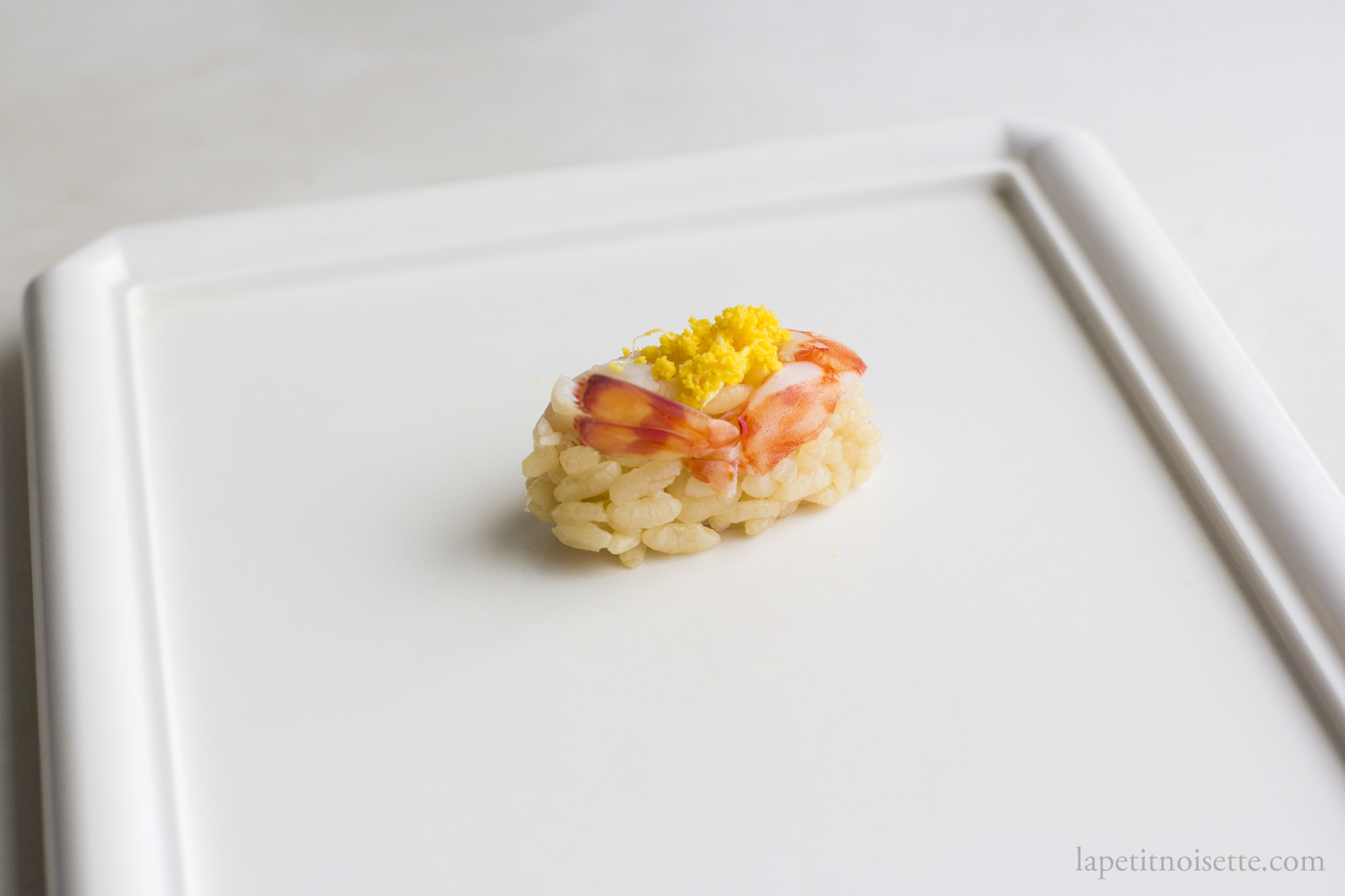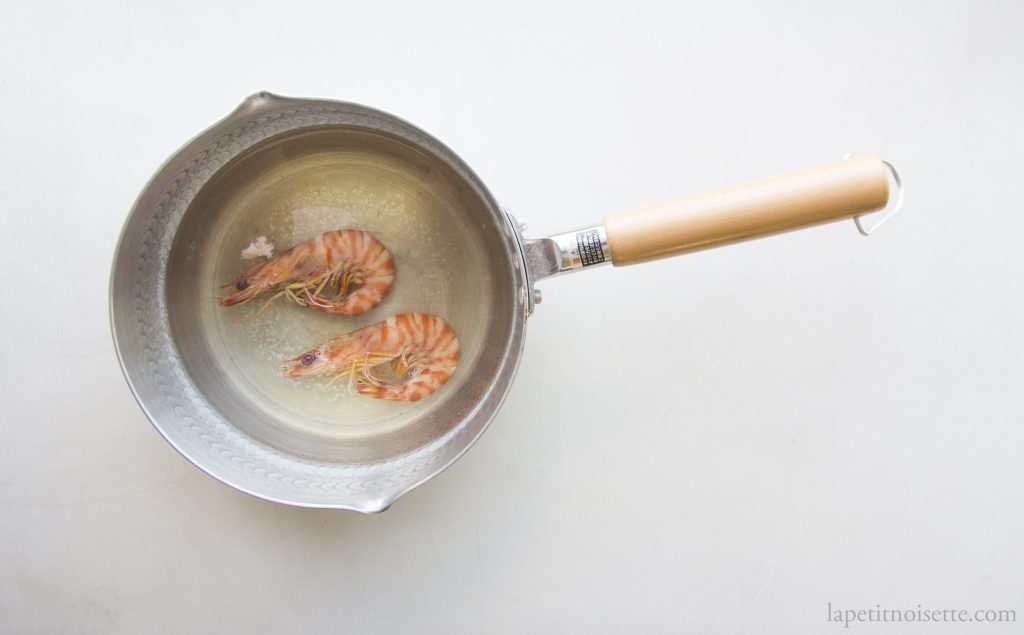
Having explored the preparation of Kuruma Ebi (Wheel shrimp), we can now explore the extremely traditional Edomae recipe of Shrimp Oboro (海老おぼろ). Shrimp Oboro is basically shrimp paste cooked over low heat for an extremely long time with constant stirring, magically transforming into extremely fluffy tiny shrimp balls/powder. The traditional preparation for this recipe takes 3 to 4 hours of work for just a tiny batch, making it extremely labour intensive. As such, this recipe is no longer made by most Edomae sushi restaurant except the most hardcore who insist on upholding tradition.

The reason why Shrimp Oboro is so time consuming is how it is prepared. First, raw small Shiba Shrimp (芝海老) are peels and deveined. These shrimp are quickly blanch in salt, drained and then hand ground with a traditional Japanese mortar (suribachi/擂鉢) and pestle (surikogi/擂粉木). After being hand ground, the paste is now slowly cooked over low heat, all the time being stirred (sometimes with the addition of egg yolk and sugar). This not only makes it time consuming but also very expensive because shrimp itself is quite costly.
Shrimp Oboro used to be used as a topping for strongly vinegared nigiri sushi such as Kohada and Kasugo in order to balance out the acidic flavour with it’s sweetness.
Egg Oboro is another version of Oboro made purely from chicken eggs. This version is also used in the same way as Shrimp Oboro and is slightly less labour intensive and less expensive. It does however, still require the long and tedious stirring under low heat to make it fluffy and powder like.
This egg Oboro is also sometimes served as a side for teriyaki-don and unagi-don (eel rice bowl) in very traditional restaurants. The egg need to be strained before being cooked however, as the chalaza of the egg (the white strong of the egg) will form strands in your Oboro. In the example of vinegared egg oboro below, it is used primarily to marinade Kuruma ebi as it contains vinegar. This improves the flavour of Kuruma ebi overnight. As it was being used as marinade and not presentation however, the chalaza of the egg white was not removed, which you can see as the egg white strands on the pot.
Simplified Vinegared Egg Oboro Recipe:

Start by adding eggs to a pan with a dash of vinegar and sugar.
Start cooking under low heat and continue stirring. As seen in the picture, the eggs are stirred using many thin skewers. This helps to separate the egg into many small balls which achieves the soft fluffy effect.

Continue to keep stirring using low heat. Be careful not to burn the eggs.

The Oboro is done. Notice the thin white strands which should have been removed earlier.
Once cooled, it is ready to be used.
Marinated Egg Oboro Kuruma Ebi (車海老おぼろにぎり):

To start marinating the Kuruma Ebi, start by preparing the Kuruma Ebi as written here.
Place the Oboro in a pan and burry the shrimp inside. Leave to marinade for 24 hours.
Shake off any excess Oboro. It is ready to be used for nigiri.
Alternatively, cook it without the bamboo skewers and allow the shrimp to curl, allowing you to use two halves of a shrimp to form a nigiri with Oboro.


Peel the shrimp and cut it straight down the middle in half. Position the pieces opposite each other and add some Oboro on top as a topping.


Traditional Edomae Shrimp Oboro (海老おぼろ) Recipe:
- Start by peeling the Shiba Shrimp (芝海老)
- Remove the vein from the back of the shrimp using a bamboo skewer.
- After peeling blanch quickly in salted boiling water until just cooked.
- Drain from any excess water.
- Place the shrimp in a mortar and grind with a pestle until it forms a smooth paste.
- Add 20% in weight of sugar and continue grinding.
- Slowly cooking in a pan over low heat whilst constantly stirring with many bamboo skewers.
- (Optional), add 1 or 2 egg yolks to add additional richness.
- The Oboro is done.